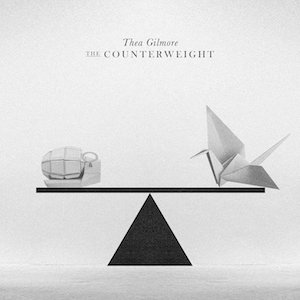 Thea Gilmore – The Counterweight
Thea Gilmore – The Counterweight
Cooking Vinyl – 1 June 2017
For The Counterweight, her fifteenth studio album, Thea Gilmore has consciously put together what she regards as a companion to 2003’s Avalanche, not so much musically, but the sociopolitical nature of much of the content.
The steady rhythm Reconcile came together in the midst of the Brexit referendum and, while it makes no direct reference, it’s not hard to read lines like “a cool blue Jericho”, “a quiet disaster” and about facing a watershed ahead in the context of political and economic change.
More specifically, Johnny Gets A Gun, with its military drum pattern backdrop, itchy chopping percussion and staccato chant delivery is a pulsating number written in response to the Pulse nightclub shooting in Orlando, Florida, that comes with the background sound of sirens and people screaming as she sings about a loner outsider seeking attention as she drops in references to The Waltons and Tarantino.
The most striking, however, is the closing number, The War, a piano and electronic slow march ballad with bookending verses referencing the murder of Labour MP Jo Cox, as the song addresses the battle lines drawn up inside the country “when the wolf’s at the door in the tide of hate.”
It ends, however, with a note of hope as she notes that “wildflowers grow again, all you can do is tend to them and know that you tried”, and that’s a light, however faint, that shines through other songs too.
With its line “let’s go to bed or go to war”, the moodily dramatic, piano-tinkling, electronic wash opener, Fall Together, could be seen as echoing the make love, not war motto of the late 60s. Except, it’s more about forging unity rather than dissension as she sings “anyone can fall apart let’s fall together.”
Musically, and there’s plenty of strings in play, its electronics that dominate the mix. Most notably so on the smokily sung Leatherette, a swirling, pulsing number that conjures some heady European movie, Gilmore transitioning Shirley Bassey and Françoise Hardy.
The cinematic air is again heard on the strings intro to the no less dramatic, scratchy Sounds Good To Me. The line “whatever gets you sets you free” echoes Whatever Gets You Through the Night in its upbeat call to seize life rather than being drowned by the darkness, dancing til your head spins, listening to I Heard It Through The Grapevine or being the ghost in the machine.
There’s more optimism shining from the vocal soaring, dreamily radio-friendly strings-swathed piano ballad Rise, a song guessingly born from her experience of depression, while Another Damn Love Song is an ebullient, poppy celebration of love and positivism that unexpectedly creeps up on skepticism (“I’m not meant to be this light. I’m sarcasm and dynamite”).
Arranged for strings, piano and a steady electronic beat, Slow Fade To Black is another number about depression and its negativity (“I pick the stitches in your heart and watch the edges fall apart”), but that’s offset by the following track, the spare electronic slow drip of the nigh-hymnal The Lucky Hum where time may be a reaper, but even love can swim.
The tide of optimism bursts through the dam of depression on New, a driving pop-rock number about renewal that, in its musical urgency and upbeat rush recalls This Girl Is Taking Bets, which just leaves Here’s To You, a return to Lennonesque piano ballad territory, a cello accompanied toast to the things that make life worth living, “to hearts ascending the way they ought to do… to alchemy.., to unity…to grand design.. to strength in numbers”. It ends as she raises a glass and sings, “here’s to lovers, here’s to you.” And here’s to you too.
Out Now

